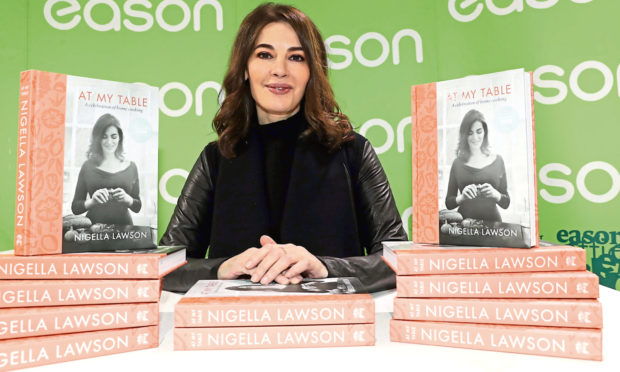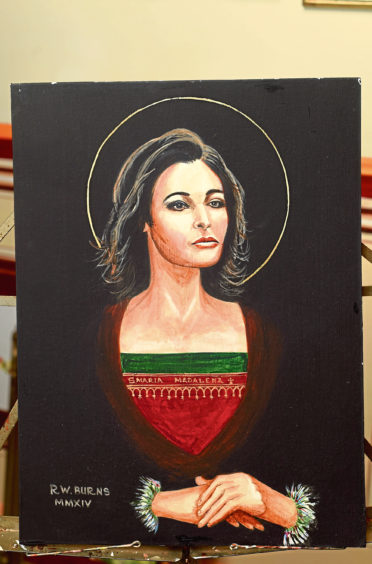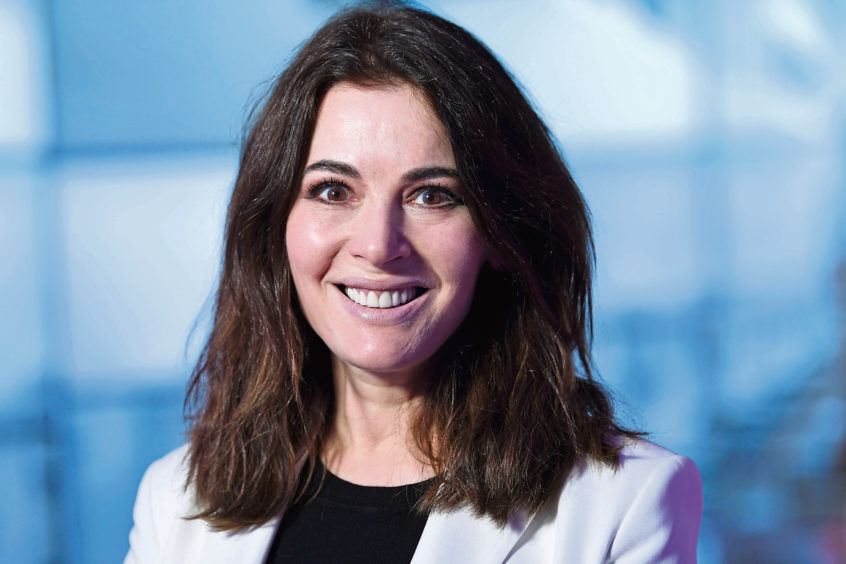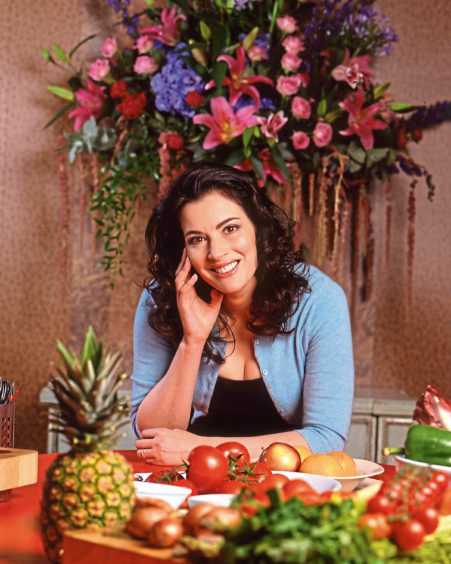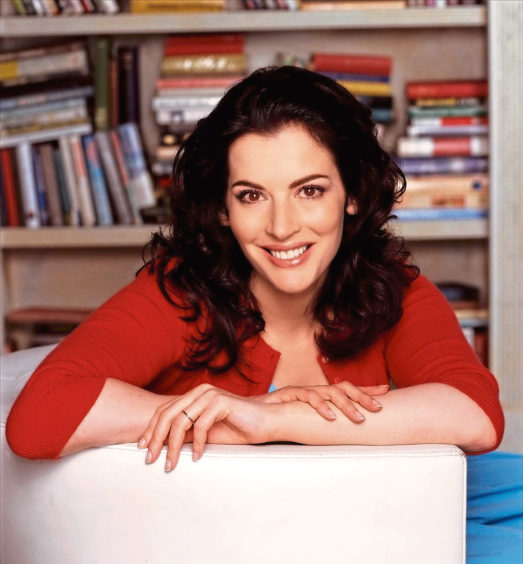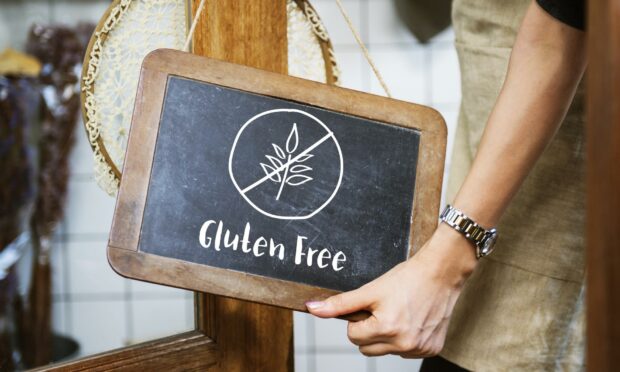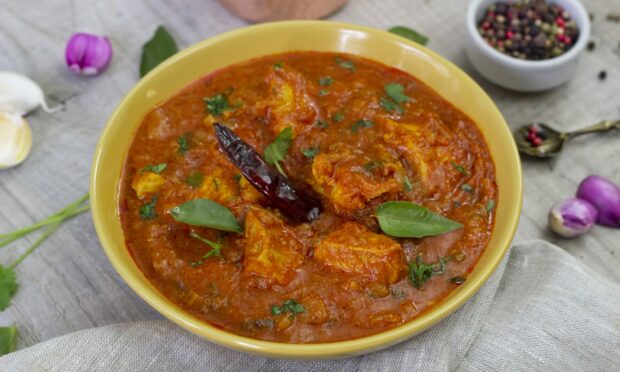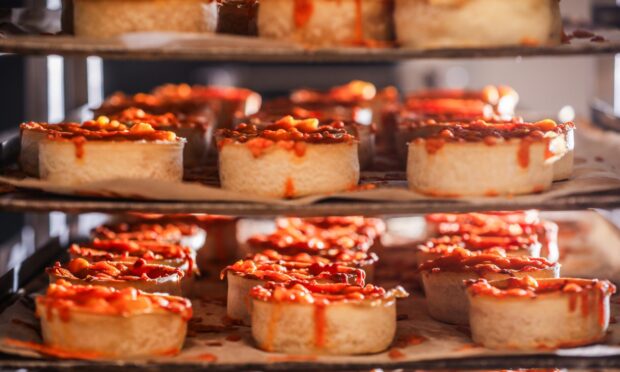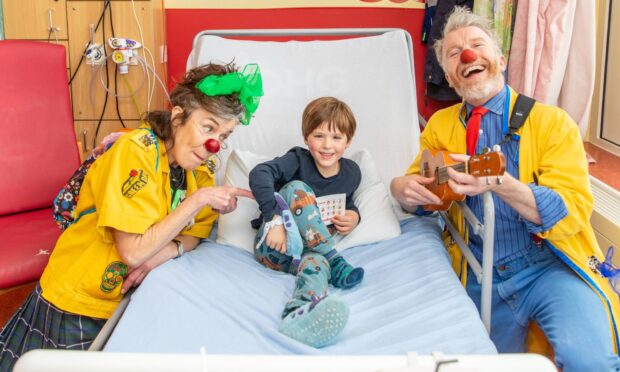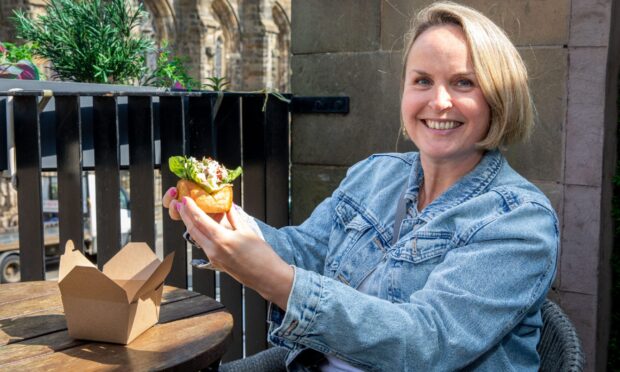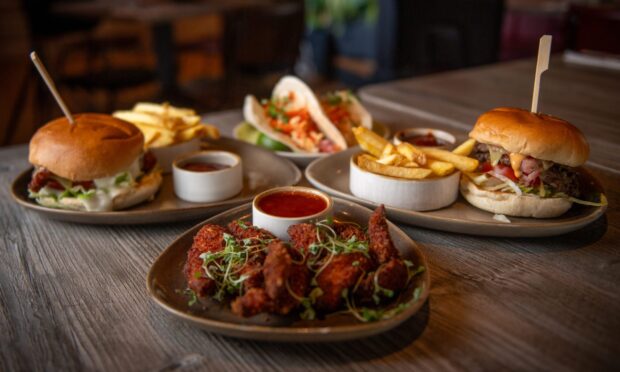Isolated in captivity in his kitchen in Fife, Murray Chalmers thinks of the good things in life – Nigella Lawson among them.
This is a love letter sent from captivity in Fife to the outside world, although I doubt it will reach its subject; such is my isolation that a message thrown into the Tay in a rinsed preserved lemon jar might be more the thing – but that’s not really the point.
At a time when we’re all living in such fear – let’s face it, watching the news is like playing nightly Russian roulette with your psyche and sleep patterns – it’s great to remember and celebrate the good things in life.
Nigella is indisputably one of them. I mean, she’s already so iconic that she’s one of the very few people who don’t even need a surname! (Madonna and Cher are justified, Cheryl “Cole” and Boris perhaps don’t chime quite so sweetly for me).
When I mentioned to friends that I was thinking of writing this column about Nigella, there wasn’t one person – female, male, gay, straight – who said anything that fell short of adoration and respect for the subject; amongst many plaudits, writer and controversialist Julie Burchill texted me to say Nigella is “smashing”, whilst a charity worker, whose cause Nigella has quietly and anonymously supported, described her quite simply as “a stand-up broad” – both phrases, coincidentally, such wonderful throwbacks to an age of glamour which informs a good part of Nigella’s beguiling persona.
Nigella’s Twitter and Instagram feeds are similarly full of the most effusive comments from home cooks, professional chefs and people in every walk of life.
That her name is derived both from fatherly conceit (her father is politician Nigel Lawson, former Chancellor of the Exchequer during Margaret Thatcher’s reign) but also from a plant species led by the wonderfully-named love-in-a-mist is in itself quite a joyfully contradictory thing; there’s a quietly ambitious determination here, that of someone who almost had to overcome their own christian name in a bid to free themselves, doubly ironic now that her name is almost a trademark.
There is an aura that is somehow eternally radiant around this woman who, despite life’s many tragedies (and she has had more than most), seems to emanate calm, camp, reason, eccentricity, fun, pragmatism, mystery and glamour into one stoic, deeply resolute presence.
The fact that she’s such a classic beauty has, of course, not been lost on her audience either, with my gay friend Gareth even joking that Nigella’s looks could temporarily reverse what nature, nurture or a combination of both had hitherto offered him.
It’s not only men, gay and straight; the food critic Marina O’Loughlin interviewed Nigella for Noble Rot magazine in 2018 and commented: “It’s difficult not to come over all Mills and Boon in her presence; she is, if anything, more beautiful in the flesh than on television: Creamy skin, inky-dark eyes to get lost in, hand-span of a waist.”
Nigella and fame
Although I have all of her 11 cookery books and have watched every TV show, it is perhaps now, with no mainstream media presence and no new book until October, that Nigella has felt most needed – but also more present. Her daily Instagram recipes are unmissable, focused and very much in the present in terms of awareness and keeping it real, whilst her Twitter feed is illuminating, both personally and politically.
Basically, she’s pro Europe, the Left and women. She long ago embraced social media as a communication tool that didn’t require her giving invasive interviews. Nigella always seemed to me to be someone who, perhaps surprisingly, seemed rather ambivalent about mass exposure and the cult of fame, especially given the trade-off that comes with it.
When she appeared on the Tonight Show with Jay Leno in the US, Leno called her the sexiest woman he had ever met and attempted to carve a joint of meat whilst putting his arms round her and getting embarrassingly close. Asked about it afterwards, Nigella commented: “On the one hand I’m being very smiley, on the other hand I’m thinking ‘please, will someone just airlift me out of here right now?’”.
Of course, you would never have known this whilst watching because she’s much too smart for that. Her much cleverer way of dealing with it was to hand Leno a meat cleaver and tell him to beat his meat; if revenge is a dish served cold then only Nigella could get away with this below-the-belt retaliation on prime-time American TV and yet somehow made Leno feel like he was being kissed.
Thus, although her books sell well and garner huge excitement, I would wager that their promotion in more recent years was the part of fame that she would have seen as a necessary endurance. Recently, she seems to have enjoyed doing selected interviews, like the brilliant one already mentioned in Noble Rot. In this, she very quietly laid to rest many of the clichés around her whilst showing a remarkably grounded perception about her place in the world.
Her best book
This interview coincided with the 20th anniversary of her staggeringly good How To Eat, her first and still best book, and the one I use the most. The fact that the book is so brilliantly written – Nigella is a fantastic wordsmith and storyteller – led to little surprise when it was republished in a new edition as a Penguin Classic with a foreword by author Jeanette Winterson.
The recipes in this book all work but it would be quite possible to read How To Eat without cooking a scrap, although the depictions of the food send me straight to the larder. More than 20 years later, and despite the fact she has published a book solely dedicated to Christmas, it is How To Eat that has become my culinary bible every year for Christmas Day lunch.
From turkey to trifle, Nigella has your back. Her ham cooked in Coke (Nigella Bites) IS Christmas Eve, whilst her cake made from ground almonds and boiled clementines (How To Eat) is Boxing Day 5pm on a plate.
Nigella Bites
Whilst the books are, at best, like old friends you call up weekly, reflecting a trajectory of the author’s life as well as the reader’s, it was the TV shows that propelled Nigella to another level of fame. In 2000, Nigella Bites hit the screens and pretty much redefined cookery shows.
Here was a modern woman cooking on screen in her domestic environment, unscripted, interspersed with scenes of family life with her husband John Diamond and children. The show showed a new Nigella (who had already done quite a lot of TV news and review programmes), essentially freer and more confident, a confidence that would increase as her fame grew.
The nascent flirting, initially a raised eyebrow tilted to camera, seemed a beautiful British mix of Carry On Camping and mild 1970s erotica, a fact Nigella herself acknowledged whilst being filmed eating an ice cream, at once mocking and celebrating the idea of women and soft-scoop pornography.
A sense of occasion
In Nigella’s escapist TV universe, everything is bathed in the most gorgeous light. Her Christmas specials are beyond even the campest idea of a season that is already groaning under a surfeit of baubles and lights; her set is like an overloaded tree that can somehow take just one more decoration and never breaks.
Her gleeful sense of occasion is palpable, even if the shows must have been filmed months before and are essentially triumphs of artifice. Still they fill us with joy. And the vocabulary is that of someone who understands the meaning of the word ‘swoon’.
Pasta is swathed, whilst pasta sauce is voluptuous – and that’s before it’s anointed. Simply zesting a lemon makes her reminisce about the lemon groves of Amalfi. Stem ginger from her larder piled on vanilla ice cream from the freezer is “very evocative – you feel like you’re having something from the pudding trolley from some provincial seaside hotel in the 1950s”. A canny mind is at work here, as well as a great cook.
Whilst cooking, she revels in being the sensory-driven wordsmith that she is. However, whilst she is an intellectual, she doesn’t intellectualise food. “Having friends for dinner is not some big ambassadorial event. It’s just your kitchen and your friends. What I’m after is minimum effort for maximum pleasure in both the cooking and the eating.”
It must be such a joy for her to be in control of her own destiny, as much as any of us can be these days. I remember when she published her almost Zen book Simply Nigella after her armour was chinked so gracelessly in the light of her break-up with Charles Saatchi.
At the time she seemed both vulnerable and yet eager to move on, as she herself wrote in the first paragraph of her introduction; “It is a commonplace to talk of cooking as being therapeutic – and there are times when that is the case – but for me cooking stems from an engagement with life, which in itself combines hopefulness with playfulness. These gifts restored to me, this book began to emerge.”
It’s a thought we could all cling on to in these troubled times.
In 2001, Nigella Lawson turned down an OBE. “I’m not saving lives,” she explained. What a woman!
